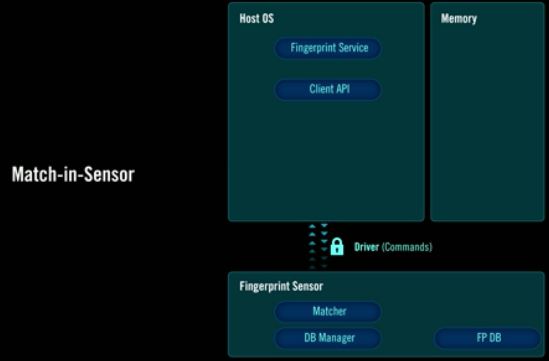Synaptics' SentryPoint Security Suite Isolates Fingerprint Sensors From Host Processors
Synaptics, one of the leading companies in fingerprint sensors, announced the Natural ID FS4304, an “ultra-slim” capacitive fingerprint sensor. Synaptics sensors have been used in popular smartphones such as Samsung’s Galaxy S5 and Galaxy S6.
Synaptics makes small fingerprint fingerprint readers that fit in tight spaces at the bottom of a smartphone’s screen or even on its side. The new sensor also seems to be targeted at the same tight areas.
Better, Not Bigger
The so-called Madrid Report, a university study funded by Next Biometrics (a Synaptics competitor), concluded that the bigger the area of the sensor, the more accurate it will be because the reader can pick up more data points from the fingerprint pattern.
This seems to make intuitive sense. However, Synaptics said that the study was oversimplifying how fingerprint readers can obtain high accuracy, noting that there are more factors in determining accuracy than the sensor’s area alone. Synaptics said that the design of the sensor array and the design of the end-product are also important, as is the software used in combination with the sensor.
Also, starting with Android 6.0, Google is requiring OEMs to use only fingerprint sensors that have a false acceptance rate no higher than 1 in 50,000. That means any future fingerprint sensors that will be seen on the market should be at least as good, obviating the size/performance debate to an extent.
SentryPoint Security Suite: Isolation From The Host Processor
Alongside the FS4304, Synaptics also announced an advanced anti-spoofing security suite called SentryPoint, which the company claimed is the “industry’s highest level of secure biometric fingerprint authentication.” Synaptics said that its software can make the difference between a spoofed fingerprint and a real finger. The company achieves this by checking for the fingerprint’s “liveness.”
Synaptics’ SentryPoint also delivers enrollment and match in the sensor itself, which means the sensor is fully isolated from the application processor. It also comes with a cryptographic engine on the chip, a unique key generation module, TLS1.2 encrypted secure communications to the host, and a FIDO UAF authenticator.
Get Tom's Hardware's best news and in-depth reviews, straight to your inbox.
“Even if the host system is compromised by malware or other attacks, SentryPoint provides an added layer of protection for the user’s biometric data,” said Anthony Gioeli, vice president of marketing, Biometrics Product Division, Synaptics.
Synaptics’ Natural ID FS4304 sensor is already sampling, and it should be available in devices in Q3 this year. The company will be available at the Mobile World Congress next week for presentations to interested customers.
Lucian Armasu is a Contributing Writer for Tom's Hardware. You can follow him at @lucian_armasu.
Lucian Armasu is a Contributing Writer for Tom's Hardware US. He covers software news and the issues surrounding privacy and security.
-
jasonkaler It's about time someone implemented that.Reply
The current implementation where the host software gets to see fingerprint data was possibly the worst idea ever conceived in security.

